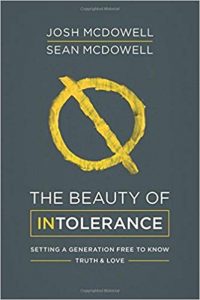 Josh McDowell is a graduate of Wheaton College and Talbot Theological Seminary. He has written or co-authored over 150 books. He is an influential humanitarian and apologist, and is affiliated with Cru.
Josh McDowell is a graduate of Wheaton College and Talbot Theological Seminary. He has written or co-authored over 150 books. He is an influential humanitarian and apologist, and is affiliated with Cru.
How do you talk with your children and their friends about tough topics like living together outside of marriage, homosexuality, and atheism? In our world of “tolerance,” we are frequently judged as hateful and prejudiced when we do. Josh McDowell and his son Sean approach these tough subjects from two different age levels and show us how to discuss them with the younger generation.
The authors grasp what is happening today. They explain the contemporary culture’s understanding of certain words and contrast that to the biblical meaning of those same words. For example, they explain the difference between cultural tolerance and real tolerance. Cultural tolerance, which is taught in many schools, means that we should accept people’s feelings as true for them, even if they are not true for us. It rejects the existence of ultimate authority. Real tolerance, on the other hand, means loving people even when we disagree with their decisions, and showing them God’s objective truth.
The authors give real-life examples of conversations we might have with our sons and daughters. These are helpful, because it would be easy for parents to unnecessarily create divisions between themselves and their children. The authors explain how we can make our points with Bible passages. They emphasize that we need to respond rather than react. If we get angry, it will show them that Christians are hateful. We need first to build relationships. Then we can educate them, while showing concern for the person who is sinning.
One section teaches a four-step decision-making process. The steps are intended to help our children and students understand how to approach the choices they face. The four steps are: 1) Consider the choice; 2) Compare it to God; 3) Commit to God’s way; and 4) Count on God’s protection and provision. It is also important that we model how to make choices. Our children and students are watching us. Are we authentic? Do we practice what we preach? If the Lord is so important to us, why aren’t we doing what he says?
I will mention one last point that I truly loved. The authors encourage us to make friends with people who are not like us, but who are opposite of us. For example, attend a gathering of atheists and build some friendships. God tells us that he loves all people. Do we love all people? The younger generation is asking that question. How far are we willing to go outside our comfort zone? This younger generation doesn’t want talk, but rather a lifestyle that proves in their mind that we Christians are following God’s commands.

